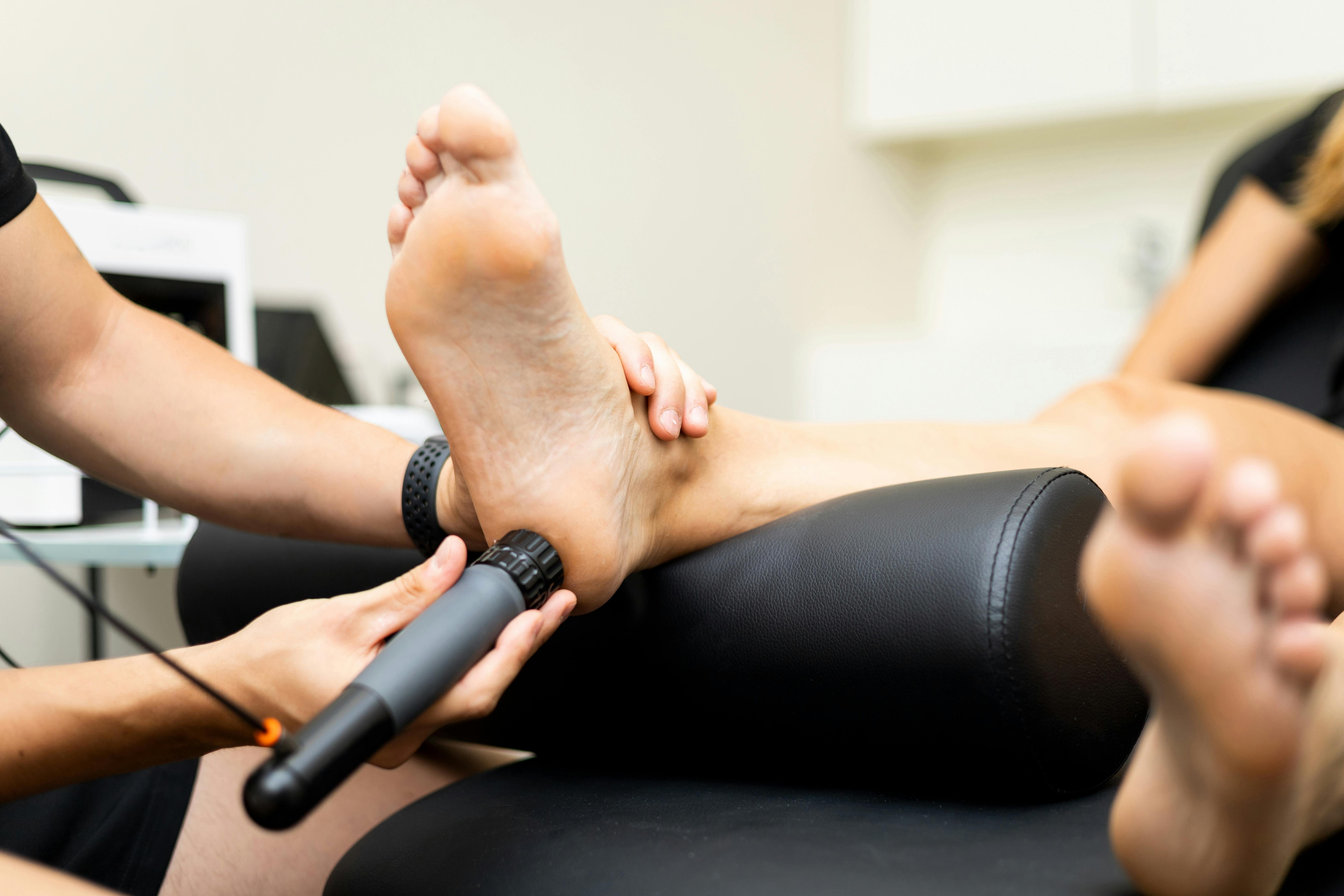Shock Wave Therapy: Is It Really Worth It?

Shock wave therapy has been gaining popularity for treating foot and heel pain, like plantar fasciitis and Achilles tendonitis. It’s a treatment that uses sound waves to stimulate healing in injured tissues. While it sounds high-tech and promising, as a podiatrist, I prefer sticking to tried-and-true manual techniques like massage, stretching, and dry needling.
Let’s have a chat about why.
What Is Shock Wave Therapy?
Shock wave therapy involves using a machine to send high-energy sound waves into your tissues. The idea is that these waves can help reduce pain and promote healing by improving blood flow and breaking down scar tissue.
While it’s often marketed as a quick fix, the reality is that shock wave therapy isn’t for everyone—and the results can vary.
Why I Prefer Manual Techniques
Here’s the thing: foot pain, especially conditions like plantar fasciitis, is rarely about just one issue. It’s usually a combination of tight muscles, poor biomechanics, and sometimes overuse. That’s why I believe manual, hands-on treatments often provide more targeted and effective results.
- Massage
Massage works wonders for relieving tension in tight muscles and fascia. It’s hands-on, personalised, and lets me address exactly where you’re feeling pain or tightness. - Stretching
Stretching is a simple yet powerful way to improve flexibility and reduce strain on your tissues. Plus, it’s something you can continue at home, which empowers you to take control of your recovery. - Dry Needling
For stubborn trigger points, dry needling is highly effective at releasing tight muscle fibres and reducing pain. It’s precise and focuses on the root cause of the discomfort, rather than just masking symptoms.
My Concerns About Shock Wave Therapy
While shock wave therapy can work for some people, there are a few reasons I don’t rely on it:
- It’s Not a Magic Fix: While it might help with pain relief, it doesn’t address the underlying causes, like tight calves or poor foot mechanics. Without tackling the root problem, the pain often comes back.
- It Can Be Expensive: Sessions can add up, and with no guarantee of success, it’s a big investment compared to manual therapies that are often more affordable and effective.
- It’s Impersonal: Machines don’t have the same ability to adapt or respond to what your body needs in the moment. Hands-on techniques allow for a more tailored approach.
When Shock Wave Therapy Might Be an Option
That said, shock wave therapy isn’t all bad. It can be useful for certain cases, especially if manual techniques haven’t provided enough relief or if the condition has become chronic. But I see it as a secondary option—not the first line of treatment.
The Bottom Line
When it comes to treating foot pain, I believe in taking a holistic, hands-on approach that focuses on the root cause of the issue. Massage, stretching, dry needling, and strengthening exercises not only provide relief but also help prevent the problem from returning.
If you’re dealing with persistent pain, let’s chat about the best approach for you. I’ll always prioritise evidence-based, personalised care to get you back on your feet—no fancy machines required!